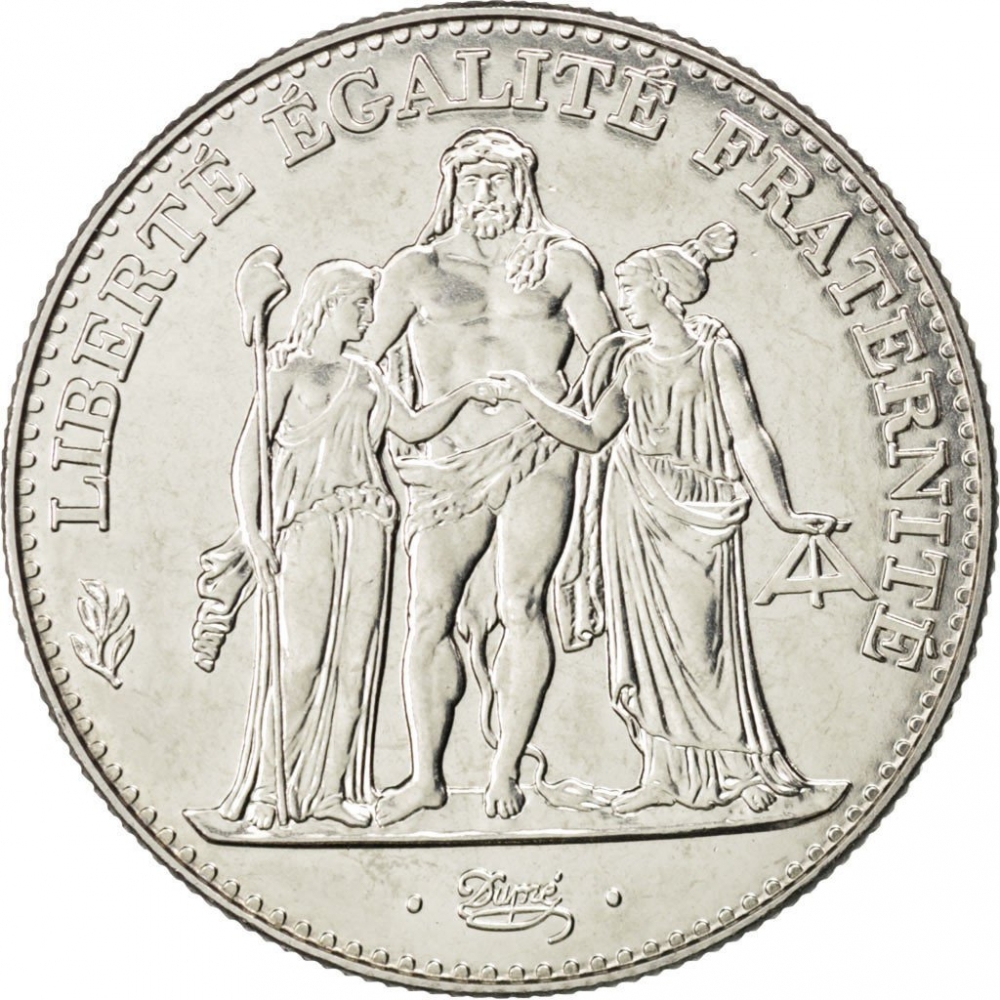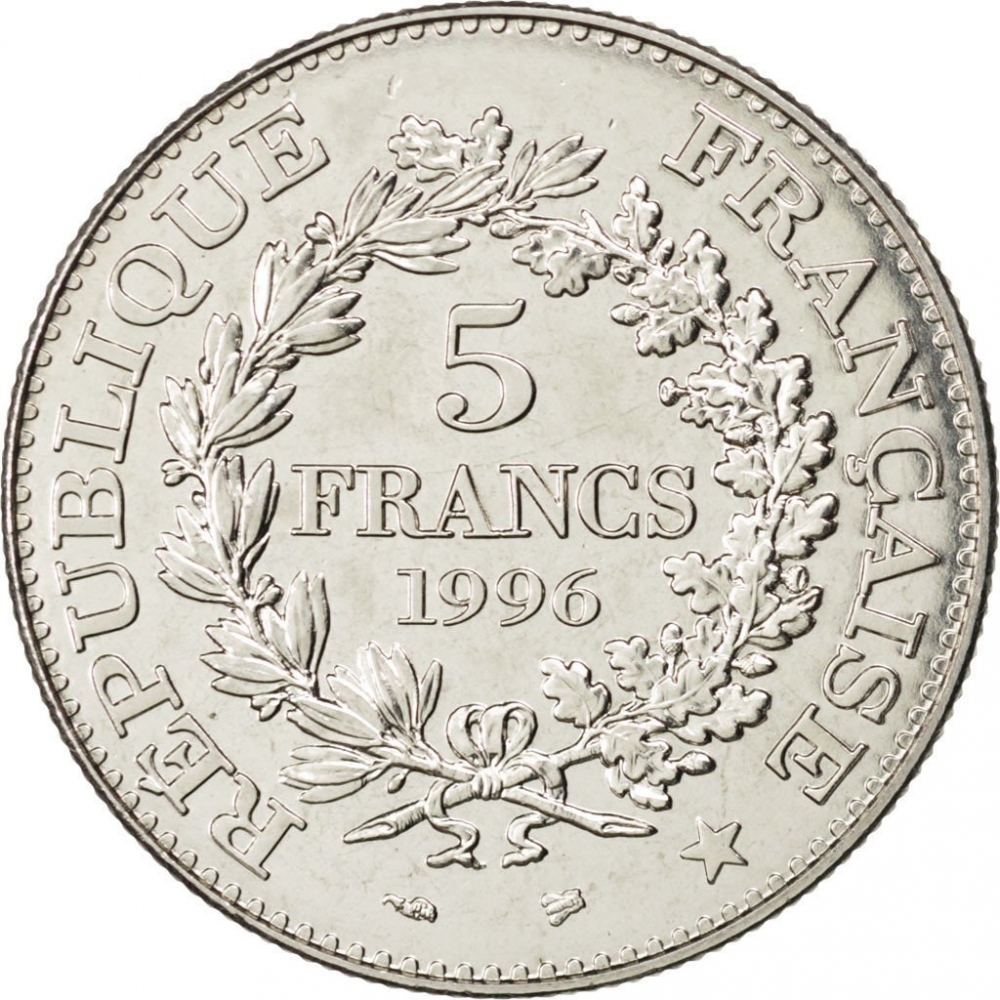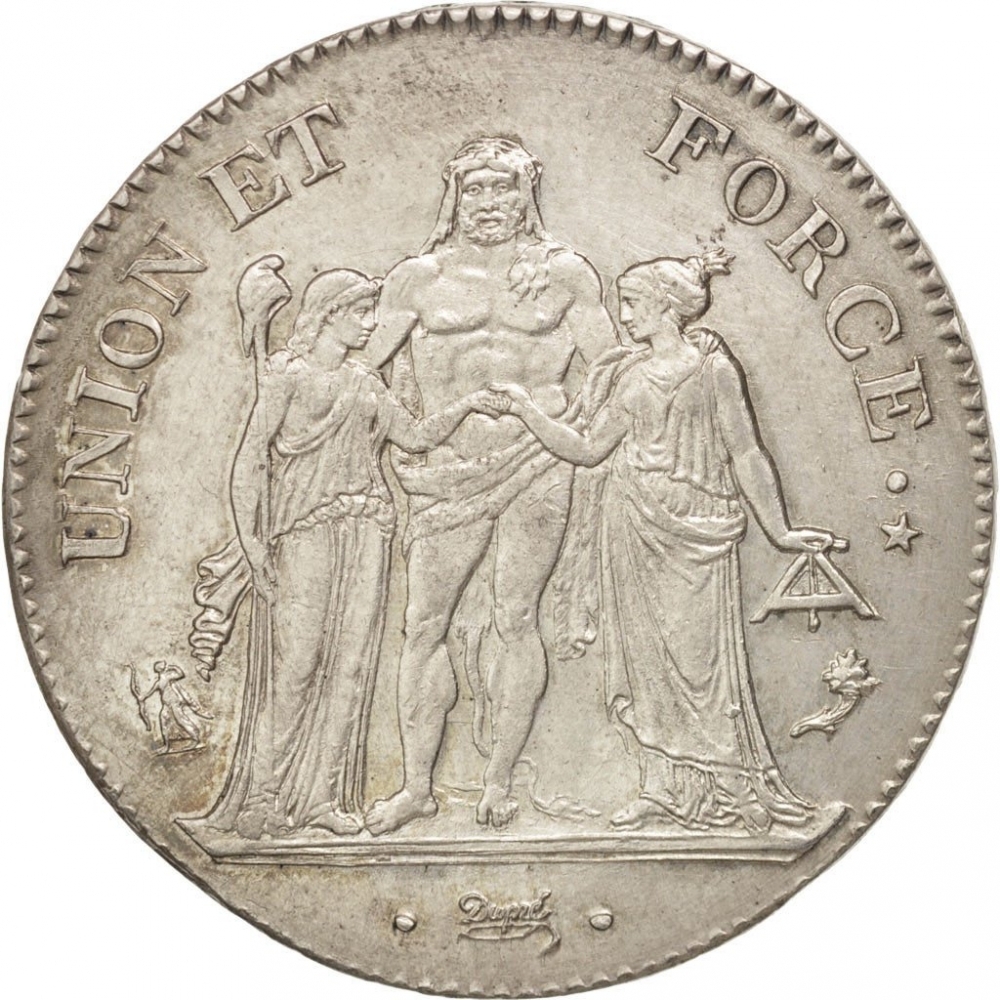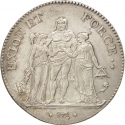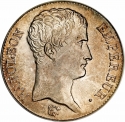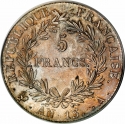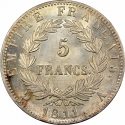You are about to finish your registration. Please check your mailbox (including spam folder). There should be a letter with a confirmation link. Check setting to make sure that your e-mail address is correct.
Send letter againDescription
The decimal Franc was established as the national currency by the French Revolutionary Convention in 1795 as a decimal unit (1 franc = 10 décimes = 100 centimes) of 4.5 g of fine silver. This was slightly less than the Livre of 4.505 g, but the Franc was set in 1796 at 1.0125 Livres (1 livre, 3 deniers), reflecting in part the past minting of sub-standard coins. Silver coins now had their denomination clearly marked as “5 FRANCS” and it was made obligatory to quote prices in Francs. This ended the ancien régime’s practice of striking coins with no stated denomination, such as the Louis d'or, and periodically issuing royal edicts to manipulate their value in terms of money of account, i.e. the Livre tournois.
Coinage with explicit denominations in decimal fractions of the Franc also began in 1795. Decimalization of the franc was mandated by an act of 7 April 1795, which also dealt with of weights and measures. France led the world in adopting the metric system and it was the second country to convert from a non-decimal to a decimal currency, following Russia’s conversion in 1704, and the third country to adopt a decimal coinage, also following the United States in 1787. France’s first decimal coinage used allegorical figures symbolizing revolutionary principles.
Engraver Augustin Dupré (1748–1833) was the 14th Graveur général des monnaies (Engraver General of Currency). When the republic was proclaimed, Dupré engraved the bulk of the new revolutionary decimal currency. He introduced the 5 Franc silver piece stamped with the image of Hercules, Union et Force which marked the renaissance of the Franc, and the coins of 1 Centime, 5 Centimes, 1 Décime and 2 Décimes with the head of the Republic wearing the Phrygian cap.
In 1996 the French authorities struck for circulation a 5 Francs coin in order to celebrate the bicentennial of Augustin Dupré's original Hercules design created in 1795/96. Between 1792 and 1805, France had used a decimal calendar often referred to as the Republican Calendar. The calendar began each new year in September unlike the traditional January so coins minted in 1795 carry the dates 1795 or 1796.
Obverse

|
Depicts the figure of Heracles stands between two female personifications, who unites Freedom (carrying a staff with a Phrygian cap on top) and Equality (holding an archipendulum, which stands for equality of all citizens) with the inscription of unity and power. Heracles stands in the center protecting the two women and wearing the skin of the Nemean Lion which, in the legend of the twelve tasks, granted him the gift of invulnerability. The name of the engraver in the exergue. The national motto of France (Liberty, Equality, Fraternity) above. LIBERTÉ ÉGALITÉ FRATERNITÉ |
|---|---|
Reverse

|
Depicts two entwined branches, oak and laurel, with the legend reading ‘French Republic’. In the center the denomination, the date below. RÉPUBLIQUE FRANÇAISE * |
| Edge |
5 Francs
200th Anniversary of the Decimal Franc
Augustin Dupré's Hercules
Subscribe series
KM# 1155 Gadoury# 777 Schön# 454
200th Anniversary of the Decimal Franc
Augustin Dupré's Hercules
